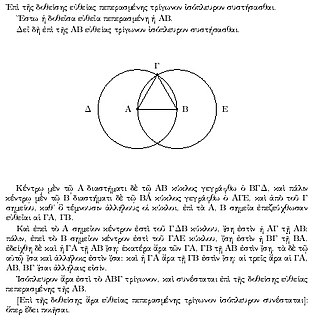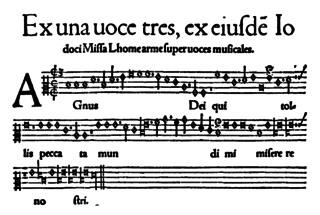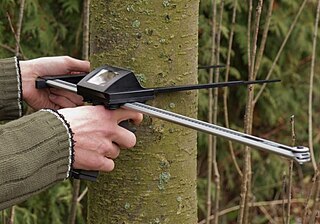
The area of study known as the history of mathematics is primarily an investigation into the origin of discoveries in mathematics and, to a lesser extent, an investigation into the mathematical methods and notation of the past. Before the modern age and the worldwide spread of knowledge, written examples of new mathematical developments have come to light only in a few locales. From 3000 BC the Mesopotamian states of Sumer, Akkad and Assyria, together with Ancient Egypt and Ebla began using arithmetic, algebra and geometry for purposes of taxation, commerce, trade and also in the field of astronomy and to formulate calendars and record time.

Mathematics includes the study of such topics as quantity, structure (algebra), space (geometry), and change. It has no generally accepted definition.

Natural science is a branch of science concerned with the description, prediction, and understanding of natural phenomena, based on empirical evidence from observation and experimentation. Mechanisms such as peer review and repeatability of findings are used to try to ensure the validity of scientific advances.

Computational physics is the study and implementation of numerical analysis to solve problems in physics for which a quantitative theory already exists. Historically, computational physics was the first application of modern computers in science, and is now a subset of computational science.
Quantity is a property that can exist as a multitude or magnitude, which illustrate discontinuity and continuity. Quantities can be compared in terms of "more", "less", or "equal", or by assigning a numerical value in terms of a unit of measurement. Mass, time, distance, heat, and angular separation are among the familiar examples of quantitative properties.

In music, a prolation canon is a type of canon, a musical composition wherein the main melody is accompanied by one or more imitations of that melody in other voices. Not only do the voices sing or play the same melody, they do so at different speeds. Accompanying voices may enter either simultaneously or successively. If voices extend the rhythmic values of the leader, a procedure known as augmentation, the resulting canon can be called an augmentation canon or canon by augmentation or sloth canon. Conversely, if they reduce the note values in diminution, it can be called a diminution canon or canon by diminution.

Charles Hutton FRS FRSE LLD was an English mathematician and surveyor. He was professor of mathematics at the Royal Military Academy, Woolwich from 1773 to 1807. He is remembered for his calculation of the density of the earth from Nevil Maskelyne's measurements collected during the Schiehallion experiment.
Thomas Simpson FRS was a British mathematician and inventor known for the eponymous Simpson's rule to approximate definite integrals. The attribution, as often in mathematics, can be debated: this rule had been found 100 years earlier by Johannes Kepler, and in German it is called Keplersche Fassregel.

Elementary mathematics consists of mathematics topics frequently taught at the primary or secondary school levels.

Ancient Mesopotamian units of measurement originated in the loosely organized city-states of Early Dynastic Sumer. Each city, kingdom and trade guild had its own standards until the formation of the Akkadian Empire when Sargon of Akkad issued a common standard. This standard was improved by Naram-Sin, but fell into disuse after the Akkadian Empire dissolved. The standard of Naram-Sin was readopted in the Ur III period by the Nanše Hymn which reduced a plethora of multiple standards to a few agreed upon common groupings. Successors to Sumerian civilization including the Babylonians, Assyrians, and Persians continued to use these groupings. Akkado-Sumerian metrology has been reconstructed by applying statistical methods to compare Sumerian architecture, architectural plans, and issued official standards such as Statue B of Gudea and the bronze cubit of Nippur.

Bucking is the process of cutting a felled and delimbed tree into logs. This can be a complicated process because logs destined for plywood, lumber, and pulp each have their own price and specifications for length, diameter, and defects. Significant value can be lost by sub-optimal bucking. Cutting from the top down is overbucking and from the bottom up is underbucking.

Diameter at breast height, or DBH, is a standard method of expressing the diameter of the trunk or bole of a standing tree. DBH is one of the most common dendrometric measurements.

The Rhind Mathematical Papyrus is one of the best known examples of Ancient Egyptian mathematics. It is named after Alexander Henry Rhind, a Scottish antiquarian, who purchased the papyrus in 1858 in Luxor, Egypt; it was apparently found during illegal excavations in or near the Ramesseum. It dates to around 1550 BC. The British Museum, where the majority of papyrus is now kept, acquired it in 1865 along with the Egyptian Mathematical Leather Roll, also owned by Henry Rhind; there are a few small fragments held by the Brooklyn Museum in New York City and an 18 cm central section is missing. It is one of the two well-known Mathematical Papyri along with the Moscow Mathematical Papyrus. The Rhind Papyrus is larger than the Moscow Mathematical Papyrus, while the latter is older.
The Arab, Arabic, or Arabian mile was a historical Arabic unit of length. Its precise length is disputed, lying between 1.8 and 2.0 km. It was used by medieval Arab geographers and astronomers. The predecessor of the modern nautical mile, it extended the Roman mile to fit an astronomical approximation of 1 minute of an arc of latitude measured along a north–south meridian. The distance between two pillars whose latitudes differed by 1 degree in a north–south direction was measured using sighting pegs along a flat desert plane.

Tree allometry establishes quantitative relations between some key characteristic dimensions of trees and other properties. To the extent these statistical relations, established on the basis of detailed measurements on a small sample of typical trees, hold for other individuals, they permit extrapolations and estimations of a host of dendrometric quantities on the basis of a single measurements.

Physics deals with the combination of matter and energy. It also deals with a wide variety of systems, about which theories have been developed that are used by physicists. In general, theories are experimentally tested numerous times before they are accepted as correct as a description of Nature. For instance, the theory of classical mechanics accurately describes the motion of objects, provided they are much larger than atoms and moving at much less than the speed of light. These "central theories" are important tools for research in more specialized topics, and any physicist, regardless of his or her specialization, is expected to be literate in them.

F.X. Schumacher was a prominent forest biometrician. He served on the forestry faculty at The University of California before being called to work as chief of the section forest measurements, U.S. Forest Service. His interest in statistics led him to an affiliation with R.A. Fisher, and Schumacher led early advances to adopt statistical methods in forest inventories and silvicultural research. He joined the faculty of the Duke Graduate School of Forestry as one of its original seven faculty members. He co-authored textbooks on forest mensuration and sampling with other notable forest biometricians Donald Bruce and Roy A. Chapman. He was the first to apply the equation form Y = ea+b/X, widely known as the Schumacher equation, to timber growth and yield modeling.

Lewis R. (Lou) Grosenbaugh was a prominent U.S. Forest Service researcher and head of the Forest Service's first Pioneering Research Unit, in forest mensuration, in Berkeley, California. Known for his contributions to the fields of forest inventory, forest measurement, and forest management, Grosenbaugh built on Walter Bitterlich's idea of estimating the density of a forest with timber cruising so that individual trees could be used to estimate various stand measures, such as volume per acre.
The following outline is provided as an overview of and topical guide to social science:














